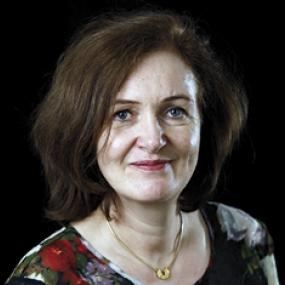Council chambers…a wonderfully welcoming place

Associate Specialist Anaesthetist, RCoA SAS Member of Council
Before I joined the College Council in March 2015, I had been a member of the SAS Committee for about 18 months. Following Council elections, I received a phone call from the then College CEO Kevin Storey, to confirm I had been successful in gaining a seat. Along with his congratulations, he gently warned me of the volume of work I would be taking on but reassured me there were very able staff to hand in all areas.
My own experience of the College as an exam candidate had taken place before the move to Red Lion Square, so all my previous connection to the building had been from attending educational events and SAS Committee meetings. At the time I knew only two other members and the prospect of sharing the space in the Council chamber with so many well-respected, even famous, anaesthetists was certainly intimidating, but everyone was very welcoming.
My Council colleagues were open-minded and allowed me to contribute in all areas of business from the start. Induction to Council used to coincide with a big scientific meeting in the calendar, which gave me a chance to get to know my colleagues a little. This was followed eight weeks later by the annual strategy meeting, at which Council and senior leadership give up their weekend for strategy planning and wider discussion.
It may not be obvious to those on the outside, but College business really revolves around training and the future of the specialty, as embodied by the anaesthetists in training - they are always at the forefront of everyone’s mind. This is the centrepiece around which the machinery rotates, and this culminates in one of the highlights of the College calendar: the Annual Diplomates Day for successful exam candidates.
Thanks to the inclusive attitude of Presidents, officers, staff, and Council members, I was given the chance to grow into a variety of roles, irrespective of my position as a SAS anaesthetist. The distribution of roles are organised on an annual cycle by the President and Vice-Presidents, considering members’ experience and personal interests. The roles become more senior over time and personal development is assisted by the offer of an annual appraisal by an officer. In contrast to my experience in the NHS, my SAS status was never seen as a reason not to give me responsibility, nor have I felt less valued because of it.
The workload of a Council member is high and has been estimated to average 10-12 hours per week, depending on the roles taken. Working in the NHS often feels like wading through treacle, with bureaucracy, inertia, and a lack of support, with staff sometimes making life difficult and hampering productivity. It was a revelation to me to see that work for the College is facilitated by amazingly clever and highly motivated staff with an unfaltering and adaptable ‘can-do’ attitude as well as a smile.
I will look back fondly on writing for the Bulletin, becoming Chair of the Communications and External Affairs Board and Nominations Committee, as well as collaborating with other specialties as Chair of the Academy of Royal College’s SAS Committee (2016-2019). The highlights include the camaraderie amongst Council, the annual strategy summits, and my fantastic SAS buddy Dr Lucy Williams.
My advice to anyone joining Council or contemplating involvement in any other aspects of College work or other professional organisations is - put yourself forward. If offered a role, make ‘yes’ your default answer. Get stuck in, follow the learning curve, and allow yourself to grow!
Dr Kirstin May
